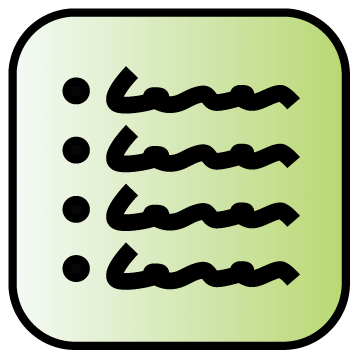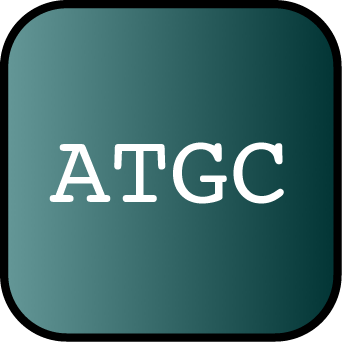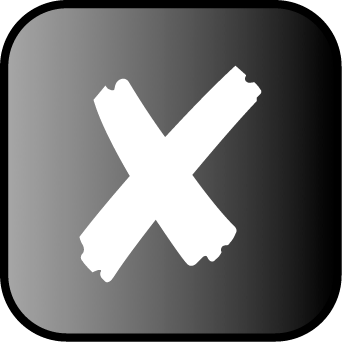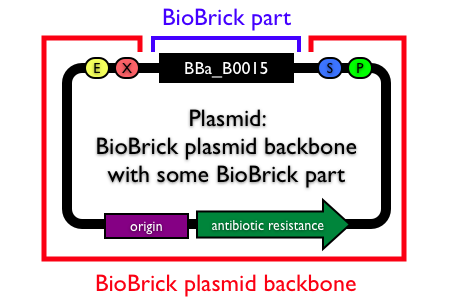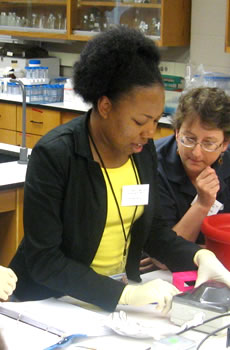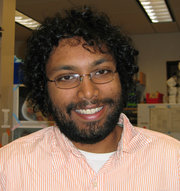Plasmid backbones/Assembly
| Part assembly | System operation | Protein expression | Assembly of protein fusions | Part measurement | Screening of part libraries | Building BioBrick vectors | DNA synthesis | Other standards | Archive |
| Or get some help on plasmid backbones. |
Plasmids are circular, double-stranded DNA molecules typically containing a few thousand base pairs that replicate within the cell independently of the chromosomal DNA. Plasmid DNA is easily purified from cells, manipulated using common lab techniques and incorporated into cells. Most BioBrick parts in the Registry are maintained and propagated on plasmids. Thus, construction of BioBrick parts, devices and systems usually requires working with plasmids.
Note: In the Registry, plasmids are made up of two distinct components:
- the BioBrick part, device or system that is located in the BioBrick cloning site, between (and excluding) the BioBrick prefix and suffix.
- the plasmid backbone which propagates the BioBrick part. The plasmid backbone is defined as the sequence beginning with the BioBrick suffix, including the replication origin and antibiotic resistance marker, and ending with the BioBrick prefix. [Note that the plasmid backbone itself can be composed of BioBrick parts.]
Many BioBrick parts in the Registry are maintained on more than one plasmid backbone!
One of the most common tasks that biological engineers do is to assemble two parts together using BioBrick® standard assembly. To make the process of assembling two BioBrick® parts together easier, there are several kinds of assembly plasmid backbones available via the Registry.
High copy number assembly plasmid backbones
The most common set of plasmid backbones that people use to assemble BioBrick® standard biological parts together are high copy BioBrick plasmid backbones. High copy plasmid DNA is easily purified in high yield from cultures, so it makes [http://openwetware.org/wiki/Miniprep/Qiagen_kit obtaining enough DNA] for assembly easy.
The high copy plasmid backbones listed below have a common set of features.
- A complete BioBrick® cloning site for easy cloning and assembly of BioBrick parts.
- Terminators flanking the BioBrick® cloning site to insulate the vector from read-through transcription originating in the cloned BioBrick® part, device or system.
- Primer binding sites for the standard BioBrick® verification primers VF2 (BBa_G00100) and VR (BBa_G00101). These primers are located for convenient sequencing and [http://openwetware.org/wiki/Colony_PCR screening by colony PCR] of cloned BioBrick® parts, devices, and systems.
Plasmid backbones are distributed by the Registry with a default insert. There are just a handful of default plasmid inserts used in the Registry. Many the available plasmid backbones have the ccdB positive selection marker (BBa_P1010) as the default plasmid insert within the BioBrick® cloning site. The ccdB gene ensures that when assembling two BioBrick® parts together, the uncut plasmid is not transformed. However, inclusion of the ccdB gene means that these vectors must be propagated in a ccdB tolerant strain, such as E. coli strain DB3.1 (BBa_V1005).
Finally, to make assembly of BioBrick® parts easier, these BioBrick® assembly plasmid backbones are available with three different antibiotic resistance markers, so that you can use [http://openwetware.org/wiki/Synthetic_Biology:BioBricks/3A_assembly 3 antibiotic assembly methods] to assemble BioBrick® parts.
| Name | Description | Resistance | Replicon | Copy number | Chassis | Length |
|---|---|---|---|---|---|---|
| BBa_J428353 | pJUMP28-1A KanR Type IIS Level 1 vector. Origin pUC (high copy number) | kanamycin | 2524 | |||
| BBa_K1362091 | pSB1A30: High copy BioBrick cloning/expression backbone carrying Amp resitance | A | pMB1 | 100-300 | 2206 | |
| BBa_K5194000 | pSB1K0 Yeast Shuttle Vector (sfGFP dropout) Type IIS | Kanamycin | Origin pUC (high copy number) | Pichia pastoris | 5355 | |
| BBa_K823055 | pSB1C3F-Vector pSB1C3 with RFP-cassette in Freiburg Standard | C | pMB1 | 100-300 | 2102 | |
| pSB1A3 | High copy BioBrick assembly plasmid | A | pMB1 | 100-300 | 2155 | |
| pSB1A7 | Transcriptionally insulated high copy BioBrick plasmid | A | pMB1 | 100-300 | 2431 | |
| pSB1AC3 | High copy BioBrick assembly plasmid | AC | pMB1 | 100-300 | 3055 | |
| pSB1AK3 | High copy BioBrick assembly plasmid | AK | pMB1 | 100-300 | 3189 | |
| pSB1AT3 | High copy BioBrick assembly plasmid | AT | pMB1 | 100-300 | 3446 | |
| pSB1C3 | High copy BioBrick assembly plasmid | C | pMB1 | 100-300 | 2070 | |
| pSB1K3 | High copy BioBrick assembly plasmid | K | pMB1 | 100-300 | 2204 | |
| pSB1T3 | High copy BioBrick assembly plasmid | T | pMB1 | 100-300 | 2461 |
| Karmella Haynes and Malcolm Campbell, instructors of the [http://2006.igem.org/Davidson_2006 2006 Davidson College iGEM team], designed and constructed the plasmid backbone pSB1A7). You can read more about the 2006 Davidson/Missouri Western project in their open-access paper [http://www.jbioleng.org/content/2/1/8 Engineering bacteria to solve the Burnt Pancake Problem] published in the Journal of Biological Engineering. | ||
| Robbie Bryant constructed the plasmid backbone pSB1AC3 in Tom Knight's lab. | ||
| Austin Che constructed the plasmid backbones pSB1C3, pSB1K3 and pSB1T3 in Tom Knight's lab. | ||
| Reshma Shetty constructed the plasmid backbones pSB1A3, pSB1AK3 and pSB1AT3 in Tom Knight's lab. |
Low and medium copy assembly plasmid backbones
While high copy plasmid backbones are generally easier to use for assembly of BioBrick® parts, some assemblies of BioBrick® parts fail at high copy. While there are different reasons why assembly of two BioBrick® parts can fail, in some cases failures happen because the composite BioBrick® part is unstable, toxic or dramatically slows the growth of the host cell when propagated at high copy. In such cases, it can be helpful to instead use low or medium copy BioBrick® plasmid backbones during assembly of BioBrick® parts. The Registry has several low and medium copy number plasmid backbones available.
All of the low and medium copy number plasmid backbones listed below have a common set of features.
- A complete BioBrick® cloning site for easy cloning and assembly of BioBrick® parts.
- A low or medium copy replication origin to reduce consumption of cellular resources during device or system operation.
- Forward and reverse terminators both upstream and downstream of the BioBrick® cloning site to insulate the vector from read-through transcription originating in the cloned BioBrick® device or system and to insulate the cloned BioBrick® system from the vector.
- Stop codons in all reading frames to prevent inadvertent translation into or out of the BioBrick cloning site.
- Primer binding sites for the standard BioBrick® verification primers VF2 (BBa_G00100) and VR (BBa_G00101). These primers are located for convenient sequencing and [http://openwetware.org/wiki/Colony_PCR screening by colony PCR] of cloned BioBrick® devices and systems.
Plasmid backbones are distributed by the Registry with a default insert. There are just a handful of default plasmid inserts used in the Registry. All of the available plasmid backbones include the RFP expression cassette (BBa_J04450) as the default plasmid insert within the BioBrick® cloning site. The RFP cassette enables red/white screening of colonies and ensures that when assembling two BioBrick® parts together, the uncut plasmid (or a plasmid that get the RFP cassette as insert) will be red on the plate whereas the correct colonies will be white.
Plasmid backbones with the plasmid insert of BBa_I52002 also include a high copy replication origin in the default insert. Thus, these plasmid backbones are easily [http://openwetware.org/wiki/Miniprep/Qiagen_kit purified in large quantities]. Cloning or assembly of a BioBrick® part into the BioBrick® cloning site of the plasmid backbone eliminates the default insert returning the plasmid to the control of the replication origin in the plasmid backbone.
Finally, to make assembly of BioBrick® parts easier, these BioBrick® assembly plasmid backbones are available with three different antibiotic resistance markers, so that you can use [http://openwetware.org/wiki/Synthetic_Biology:BioBricks/3A_assembly 3 antibiotic assembly methods] to assemble BioBrick® parts.
| Name | Description | Resistance | Replicon | Copy number | Chassis | Length |
|---|---|---|---|---|---|---|
| BBa_K1362095 | pSB4A50: Low copy BioBrick cloning/expression backbone carrying Amp resistance | A | pSC101 | ~5 | 3446 | |
| BBa_K1362096 | pSB4C50: Low(?) copy BioBrick cloning/expression backbone carrying Cm resistance | C | pSC101 | unsure | 3408 | |
| BBa_K1362097 | Low copy BioBrick expression backbone carrying Kan resistance | K | pSC101 | ~5 | 3470 | |
| BBa_K864000 | Low copy BioBrick standard vector | A | pSC101 | ~5 | 3639 | |
| BBa_K864001 | Low copy BioBrick standard vector | C | pSC101 | ~5 | 3466 | |
| BBa_K864002 | Low copy BioBrick standard vector | K | pSC101 | ~5 | 3663 | |
| BBa_K864003 | Low copy BioBrick standard vector | S | pSC101 | ~5 | 3793 | |
| BBa_K864004 | Low copy BioBrick standard vector | A | pSC101 | ~5 | 3708 | |
| BBa_K864005 | Low copy BioBrick standard vector | C | pSC101 | ~5 | 3534 | |
| BBa_K864006 | Low copy BioBrick standard vector | K | pSC101 | ~5 | 3732 | |
| BBa_K864007 | Low copy BioBrick standard vector | S | pSC101 | ~5 | 3861 | |
| BBa_K864008 | Low copy BioBrick standard vector with LacI | A | pSC101 | ~5 | 4819 | |
| BBa_K864009 | Low copy BioBrick standard vector with LacI | C | pSC101 | ~5 | 4646 | |
| BBa_K864010 | Low copy BioBrick standard vector with LacI | K | pSC101 | ~5 | 4843 | |
| BBa_K864011 | Low copy BioBrick standard vector with LacI | S | pSC101 | ~5 | 4973 | |
| BBa_K864012 | Low copy BioBrick standard vector with LacI | A | pSC101 | ~5 | 4888 | |
| BBa_K864013 | Low copy BioBrick standard vector with LacI | C | pSC101 | ~5 | 4714 | |
| BBa_K864014 | Low copy BioBrick standard vector with LacI | K | pSC101 | ~5 | 4912 | |
| BBa_K864015 | Low copy BioBrick standard vector with LacI | S | pSC101 | ~5 | 5041 | |
| BBa_K864016 | Low copy BioBrick temperature sensitive standard vector | A | pSC101ts | ~5 | 3639 | |
| BBa_K864017 | Low copy BioBrick temperature sensitive standard vector | C | pSC101ts | ~5 | 3466 | |
| BBa_K864018 | Low copy BioBrick temperature sensitive standard vector | K | pSC101ts | ~5 | 3663 | |
| BBa_K864019 | Low copy BioBrick temperature sensitive standard vector | S | pSC101ts | ~5 | 3793 | |
| BBa_K864020 | Low copy BioBrick temperature sensitive standard vector | A | pSC101ts | ~5 | 3708 | |
| BBa_K864021 | Low copy BioBrick temperature sensitive standard vector | C | pSC101ts | ~5 | 3534 | |
| BBa_K864022 | Low copy BioBrick temperature sensitive standard vector | K | pSC101ts | ~5 | 3732 | |
| BBa_K864023 | Low copy BioBrick temperature sensitive standard vector | S | pSC101ts | ~5 | 3861 | |
| pSB3C5 | Low to medium copy BioBrick standard vector | C | p15A | 10-12 | 2738 | |
| pSB3K5 | Low to medium copy BioBrick standard vector | K | p15A | 10-12 | 2936 | |
| pSB3T5 | Low to medium copy BioBrick standard vector | T | p15A | 10-12 | 3252 | |
| pSB4A5 | Low copy BioBrick standard vector | A | pSC101 | ~5 | 3395 | |
| pSB4C5 | Low copy BioBrick standard vector | C | pSC101 | ~5 | 3221 | |
| pSB4K5 | Low copy BioBrick standard vector | K | pSC101 | ~5 | 3419 | |
| pSB4T5 | Low copy BioBrick standard vector | T | pSC101 | ~5 | 3735 |
| Reshma Shetty, Drew Endy, and Tom Knight constructed this set of plasmid backbones. You can read more about the design and construction of these plasmid backbones in their open-access paper, [http://www.jbioleng.org/content/2/1/5 Engineering BioBrick vectors from BioBrick parts] published in the Journal of Biological Engineering. |
Inducible copy number assembly plasmid backbones
Sometimes it is nice to have the best of both worlds. For example, you'd usually like a BioBrick® part to propagate at low copy, but you'd also like to switch the part over to high copy when you're interested in purifying plasmid DNA. The solution is an inducible copy number plasmid backbone. Both plasmid backbones listed below have a high copy replication origin under the control of a LacI-repressible promoter. When the plasmid is propagated in an E. coli strain that expresses the repressor lacI in high quantities, such as D1210 (or BBa_V1003), the plasmid is maintained at low copy by the F' origin. To increase the plasmid copy number, simply add the small molecule [http://openwetware.org/wiki/IPTG IPTG] to induce the LacI-repressible promoter controlling the high copy number origin.
- Note: because these inducible copy number vectors rely on LacI for control of the high copy number origin, they are incompatible with any BioBrick® part, device, or system that include lacI or a LacI-regulatable promoter.
The plasmid backbones listed below have a common set of features.
- A complete BioBrick® cloning site for easy cloning and assembly of BioBrick parts.
- Terminators flanking the BioBrick® cloning site to insulate the vector from read-through transcription originating in the cloned BioBrick® part, device or system.
- Primer binding sites for the standard BioBrick® verification primers VF2 (BBa_G00100) and VR (BBa_G00101). These primers are located for convenient sequencing and [http://openwetware.org/wiki/Colony_PCR screening by colony PCR] of cloned BioBrick® parts, devices, and systems.
Plasmid backbones are distributed by the Registry with a default insert. There are just a handful of default plasmid inserts used in the Registry. Many the available plasmid backbones have the ccdB positive selection marker (BBa_P1010) as the default plasmid insert within the BioBrick® cloning site. The ccdB gene ensures that when assembling two BioBrick® parts together, the uncut plasmid is not transformed. However, inclusion of the ccdB gene means that these vectors must be propagated in a ccdB tolerant strain, such as E. coli strain DB3.1 (BBa_V1005).
| Name | Description | Resistance | Replicon | Copy number | Chassis | Length |
|---|---|---|---|---|---|---|
| pSB2K3 | Inducible copy number BioBrick plasmid | K | F' and P1 lytic | <10 or >100 | lacIq like BBa_V1003 | 4425 |
| pSB2K4 | pSB2K3-derived BioBrick plasmid free of many restriction sites | K | F' and P1 lytic | <10 or >100 | lacIq like BBa_V1003 | 4467 |
| Sri Kosuri and Leon Chan constructed plasmid backbone pSB2K3 in Drew Endy's lab based on the [http://genome.bnl.gov/Vectors/pscans.php pSCANS] vector from Brookhaven National Lab. They, together with Austin Che, constructed pSB2K4. |
References
<biblio>
- Hershfield74 pmid=4610576
- Mandecki90 pmid=2227445
- Viera82 pmid=6295879
- YanishPerron85 pmid=2985470
- Messing91 pmid=2055478
- Chang74 pmid=4598290
- Cohen77 pmid=334752
- Cabello76 pmid=765836
- Sugiura93 pmid=8376344
- Miller95 pmid=7665462
- Bolivar77 pmid=344136
- Bolibar77b pmid=344137
- Chang78 pmid=149110
- Murakami87 pmid=3031019
- Uga89 pmid=10393200
- Kawasaki96 pmid=9003285
- Stueber82 pmid=6327267
- Bernard84 pmid=7926841
</biblio>






